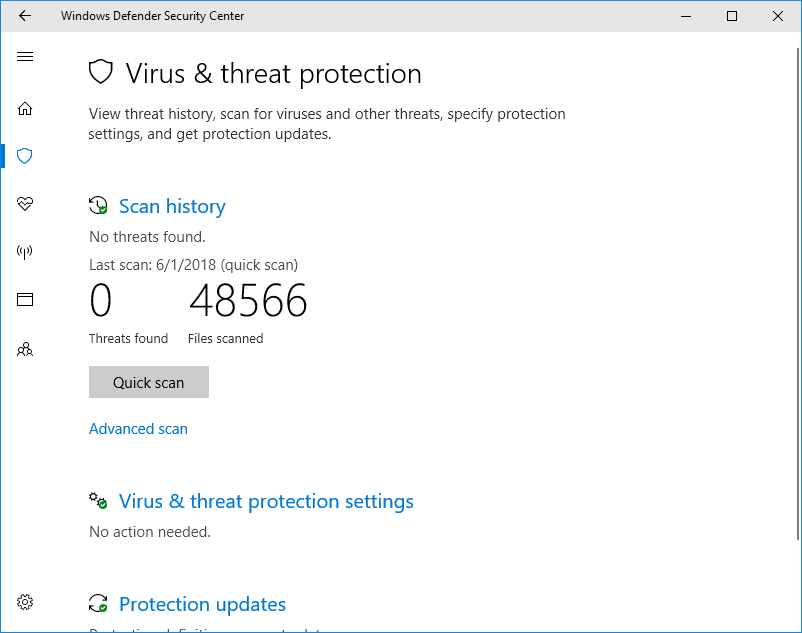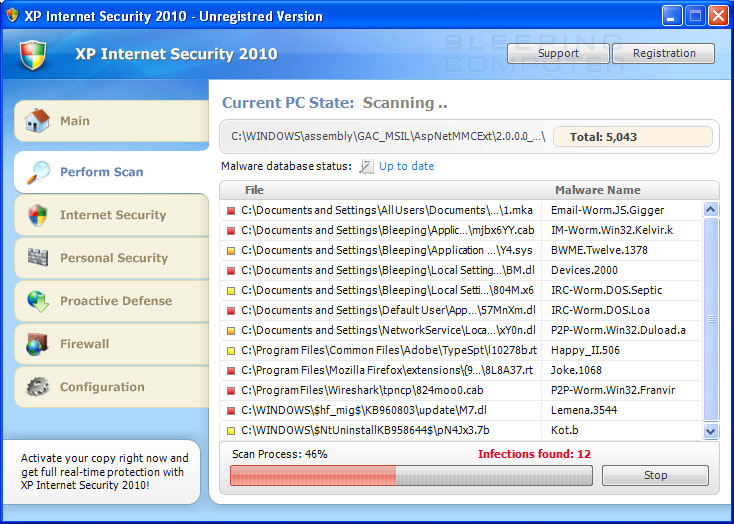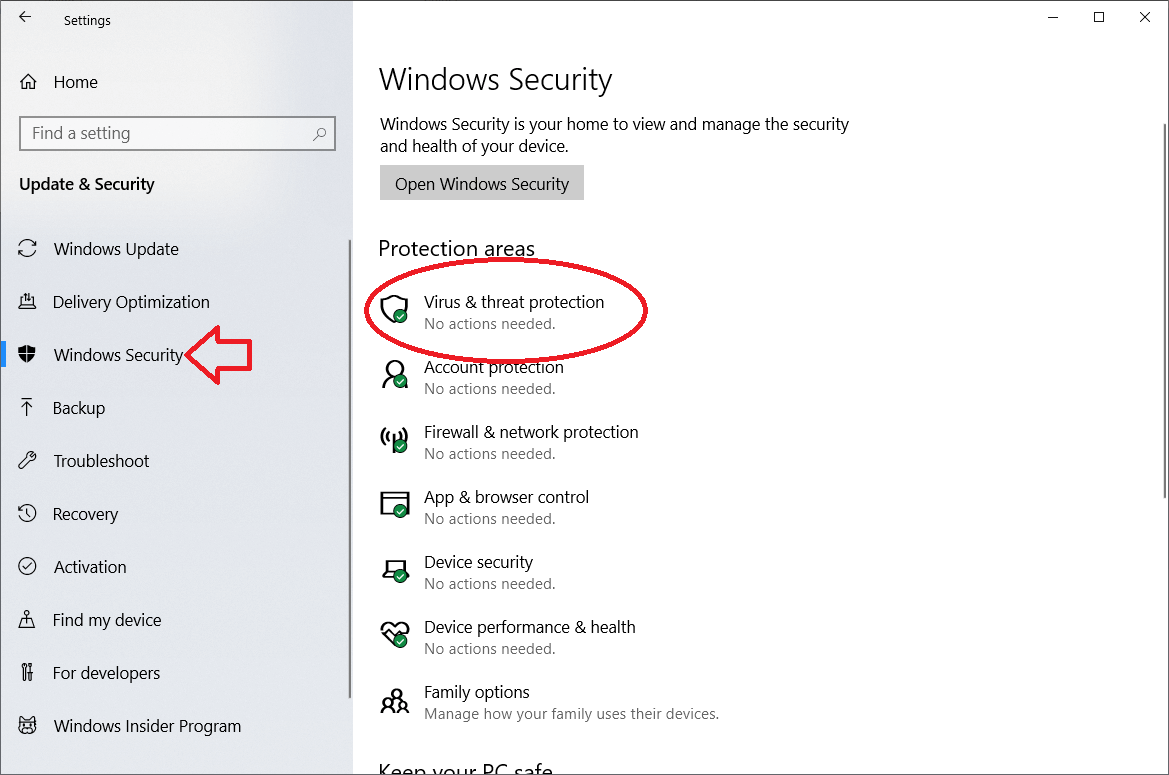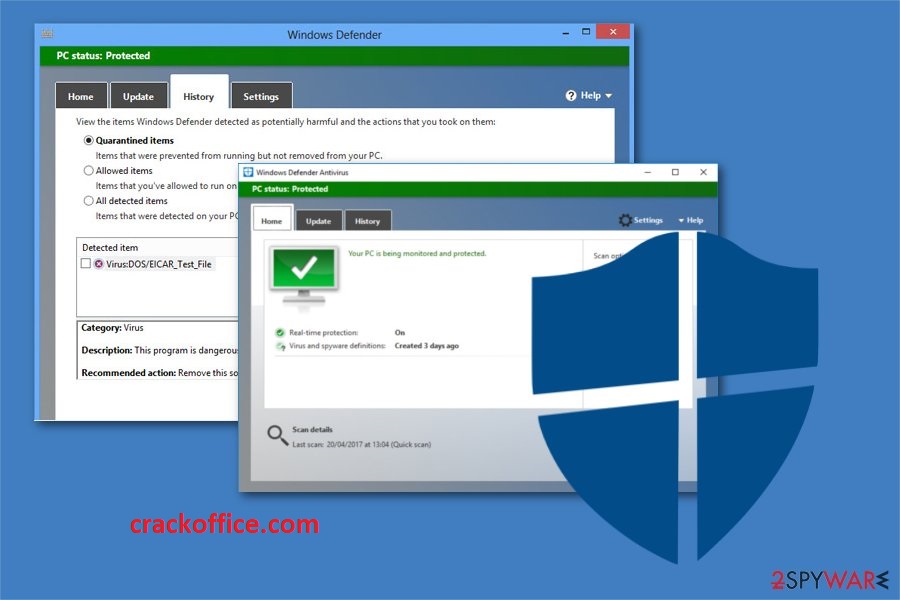

Interventions in real-time protection are usually unnecessary and should be avoided when there is no good reason to do so.
#Microsoft safety scanner scans all drives defender does not windows#
This applies, for example, to exclusions, which are particularly important on Windows servers. The majority of these options are used to disable or restrict the functions of the virus scanner. For special requirements, admins have numerous settings that can be configured via the local app, PowerShell, or group policies. In general, the default settings of Defender Antivirus offer good protection and are suitable for most environments. This is called Configure removal of items from Quarantine folder. For example, a bypass for Mimikatz could be set up with it.Īnother setting under Quarantine limits the duration for isolating files before they are deleted. This option is currently not covered by the tamper protection and may enable abuse, for example, with the Allow action. ThreatIDDefaultAction\_Ids this example, threats with IDs 1513 are quarantined. The actions for specific Threat IDs can also be set this way: Set-MpPreference -ThreatIDDefaultAction\_Actions \` In PowerShell, the following parameters are available for Set-MpPreference:įor example, to respond to severe threats by deleting the object in question, you would proceed as follows: Set-MpPreference -SevereThreatDefaultAction Remove These are assigned actions to be taken when these events occur (quarantine, remove, ignore).Īssign actions to the severity level threat

You can get a complete list of IDs with Get-MpThreatCatalog In the first setting, you specify only the severity level in the second, you specify the ID of the threat. Specify threats upon which default action should not be taken when detectedīoth policies contain a two-column table in which you enter the threat on the left and the action on the right.Specify threat alert levels at which default action should not be taken when detected.Most environments will not activate this setting because the users then have to decide what action to take.Īlternatively, if you are not satisfied with the default behavior, you can control how Defender responds to certain events. The setting Turn off routine remediation serves this purpose. One option is to completely override the tool's automatic mechanisms. Microsoft offers admins several ways to control Defender Antivirus' response to detected threats. So you should prevent excessive resource consumption when all clients run their scans over the network. In general, a file server will run its own virus scanner anyway. The equivalent in PowerShell looks like this: Set-MpPreference -DisableScanningNetworkFiles $false This can be changed with Scan files on the network. If the user has set up the mapping themselves, then Defender ignores these shares by default.

These are only checked if they have been mapped at the system level. The documentation also includes the PowerShell counterparts to Group Policy.Ī special rule applies to network drives. In PowerShell, this can be done with: Set-MpPreference -DisableRealtimeMonitoring $trueĪll of these functions are active by default and should remain so for unless you have a good reason to disable them. According to the documentation, the setting Turn off Microsoft Defender Antivirus has no effect. If another virus scanner from a different vendor is running, Defender will switch itself off anyway. However, there are not many good reasons to do this. This only works if the tamper protection is deactivated. You can remove these exclusions with Remove-MpPreference -ExclusionExtension "dat,db" Real-time protectionĪ key feature of Defender Antivirus is that it continuously monitors changes in the file system or registry to detect suspicious activities or objects.ĭefender Antivirus cannot be uninstalled on client operating systems, but you can switch off real-time protection using the respective policy. An example of this is: Set-MpPreference -ExclusionExtension "dat,db" If you define exclusions using PowerShell, then the Set-MpPreference parameters DisableAutoExclusions, ExclusionExtension, ExclusionIpAddress, ExclusionPath, and ExclusionProcess achieve this task.

By excluding IP addresses, you can prevent Antivirus from scanning requests coming from these systems. Exclusions by process allow you to prevent Defender from scanning files opened by a specific program.Īntivirus scans not only the file system, but also several protocols that are considered vulnerable. The other three settings, on the other hand, allow you to define your own exclusions, either by path, file extension, processes, or IP addresses.


 0 kommentar(er)
0 kommentar(er)
